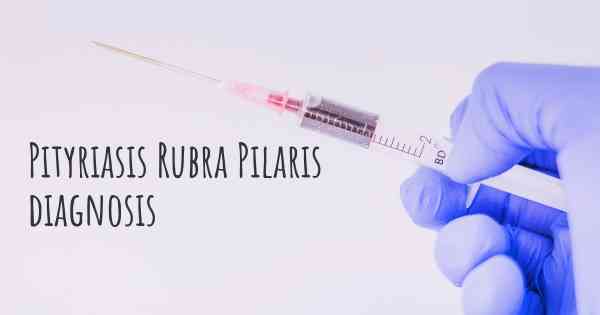How is Pityriasis Rubra Pilaris diagnosed?
See how Pityriasis Rubra Pilaris is diagnosed. Which specialists are essential to meet, what tests are needed and other useful information for the diagnosis of Pityriasis Rubra Pilaris

Pityriasis Rubra Pilaris (PRP) is a rare and chronic skin disorder characterized by the presence of reddish-orange scaly patches, thickened skin, and small bumps. Diagnosing PRP can be challenging as its symptoms can resemble other skin conditions. However, there are several key steps and diagnostic tools that dermatologists use to identify and confirm the presence of PRP.
Medical History and Physical Examination
The diagnostic process for PRP typically begins with a thorough medical history review and physical examination. The dermatologist will ask the patient about their symptoms, their duration, and any factors that may have triggered or worsened the condition. It is important for the patient to provide detailed information about their medical history, including any previous skin conditions or treatments.
During the physical examination, the dermatologist will carefully inspect the affected areas of the skin. They will look for characteristic signs of PRP, such as reddish-orange patches, scaling, and follicular plugging. The dermatologist may also examine other parts of the body to check for any associated symptoms or systemic involvement.
Biopsy
A skin biopsy is a crucial diagnostic tool for confirming PRP. It involves the removal of a small sample of skin tissue for microscopic examination. The dermatologist will numb the area with a local anesthetic and then take a small punch or shave biopsy from an affected area.
The skin sample is sent to a laboratory where it is processed, stained, and examined under a microscope by a pathologist. The pathologist will look for specific histological features that are characteristic of PRP, such as hyperkeratosis (thickening of the outer layer of the skin), parakeratosis (retention of nuclei in the outer layer of the skin), and follicular plugging.
Blood Tests
Blood tests are often conducted to rule out other potential causes of the symptoms and to assess the overall health of the patient. While there is no specific blood test for PRP, certain laboratory findings can support the diagnosis. These may include:
- Elevated levels of acute-phase reactants, such as C-reactive protein (CRP) and erythrocyte sedimentation rate (ESR), indicating inflammation in the body.
- Increased white blood cell count (leukocytosis) or abnormal differential count.
- Elevated liver enzymes (transaminases) in some cases.
- Thyroid function tests to rule out any underlying thyroid abnormalities.
Genetic Testing
In some cases, genetic testing may be recommended to identify specific gene mutations associated with PRP. This is particularly relevant for individuals with an early-onset or familial form of the condition. Genetic testing can help confirm the diagnosis and provide valuable information for genetic counseling and management.
Differential Diagnosis
Since the symptoms of PRP can resemble other skin conditions, it is important to differentiate PRP from similar disorders. The dermatologist will consider the patient's medical history, physical examination findings, biopsy results, and blood test results to rule out other possible diagnoses. Some conditions that may need to be excluded include psoriasis, eczema, seborrheic dermatitis, and other forms of follicular keratosis.
Consultation with Dermatologist
Diagnosing PRP can be complex, and it often requires the expertise of a dermatologist who specializes in skin disorders. If a general practitioner suspects PRP based on the initial evaluation, they will typically refer the patient to a dermatologist for further assessment and confirmation of the diagnosis.
In conclusion, diagnosing Pityriasis Rubra Pilaris involves a combination of medical history review, physical examination, skin biopsy, blood tests, and sometimes genetic testing. It is important to consult with a dermatologist for an accurate diagnosis and appropriate management of PRP.








